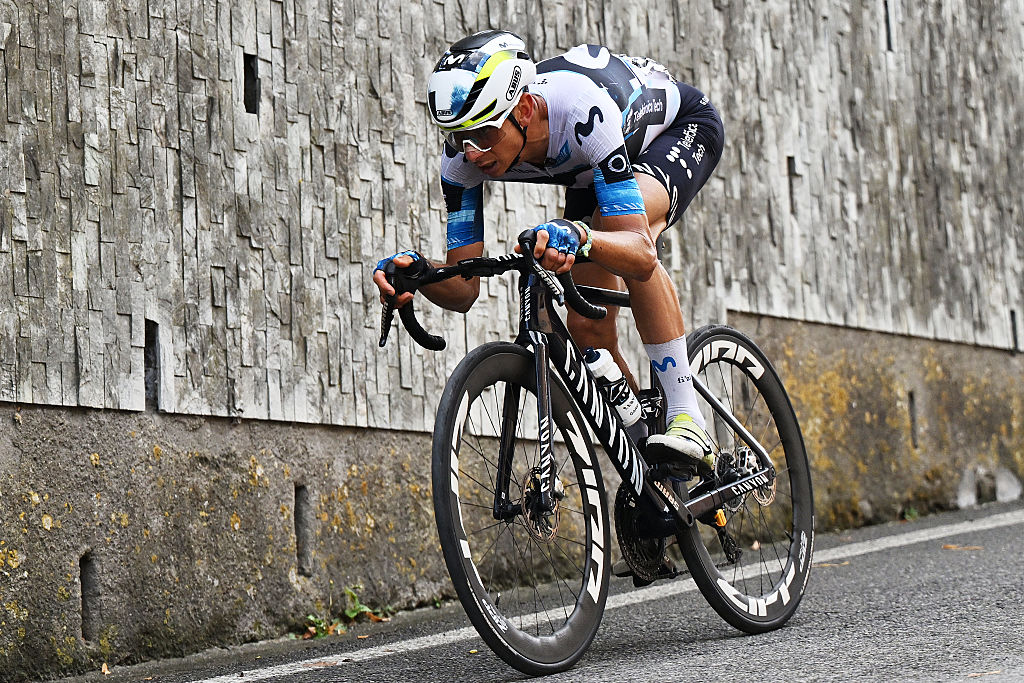Stock shortages, equipment registration and the latest marginal gains - Talking Olympic Games track tech with the Dutch head mechanic
Chatting 200 psi tubulars, track air pressure sensors and the need to win ahead of the Paris Olympic games next month

The march of the modern-day cycling calendar is a relentless one. In a regular year, the pro peloton swiftly races from the arid deserts of the early season Middle Eastern races to the open, grey skies of Flanders fields and then onto the high mountain passes of the Giro d'Italia and the Tour de France.
Just days ago, the sun was setting on the seafront in Nice after seeing Tadej Pogačar crowned Tour de France champion after laying waste to the race and taking his third overall victory, but even before the race was done, the attention of many in the race would already be turned to what's next.
Every four years, the Olympic Games roll around and slot into the cycling calendar, adding a fascinating extra dimension to an already busy season, and in a short space of time, the open roads of the south of France will be swapped for the intensity and noise of the velodrome as the Olympic Games track programme kicks off on the 5th of August.
The Dutch track squad will journey to France with high expectations and big goals. They have excelled on the track in recent years, particularly in the sprint events. The men's team sprint squad of Jeffrey Hoogland, Harrie Lavreysen, Roy van den Berg and Matthijs Büchli are the defending European, Olympic and World Champions. Shanne Braspennincx is the defending women's Olympic keirin champion, whilst thirteen-time world champion Harrie Lavreysen is also the reigning men's Olympic and World Individual sprint champion.
Ahead of the Games, Cyclingnews sat down with Tim de Boer, the head mechanic for the Dutch Olympic Track Cycling Team, a veteran of four Olympic Games and the man responsible for the squad's equipment ahead of the Paris Olympics for an in-depth chat on track tech, equipment and a look at some nuanced aspects of track racing that sometimes go unnoticed.
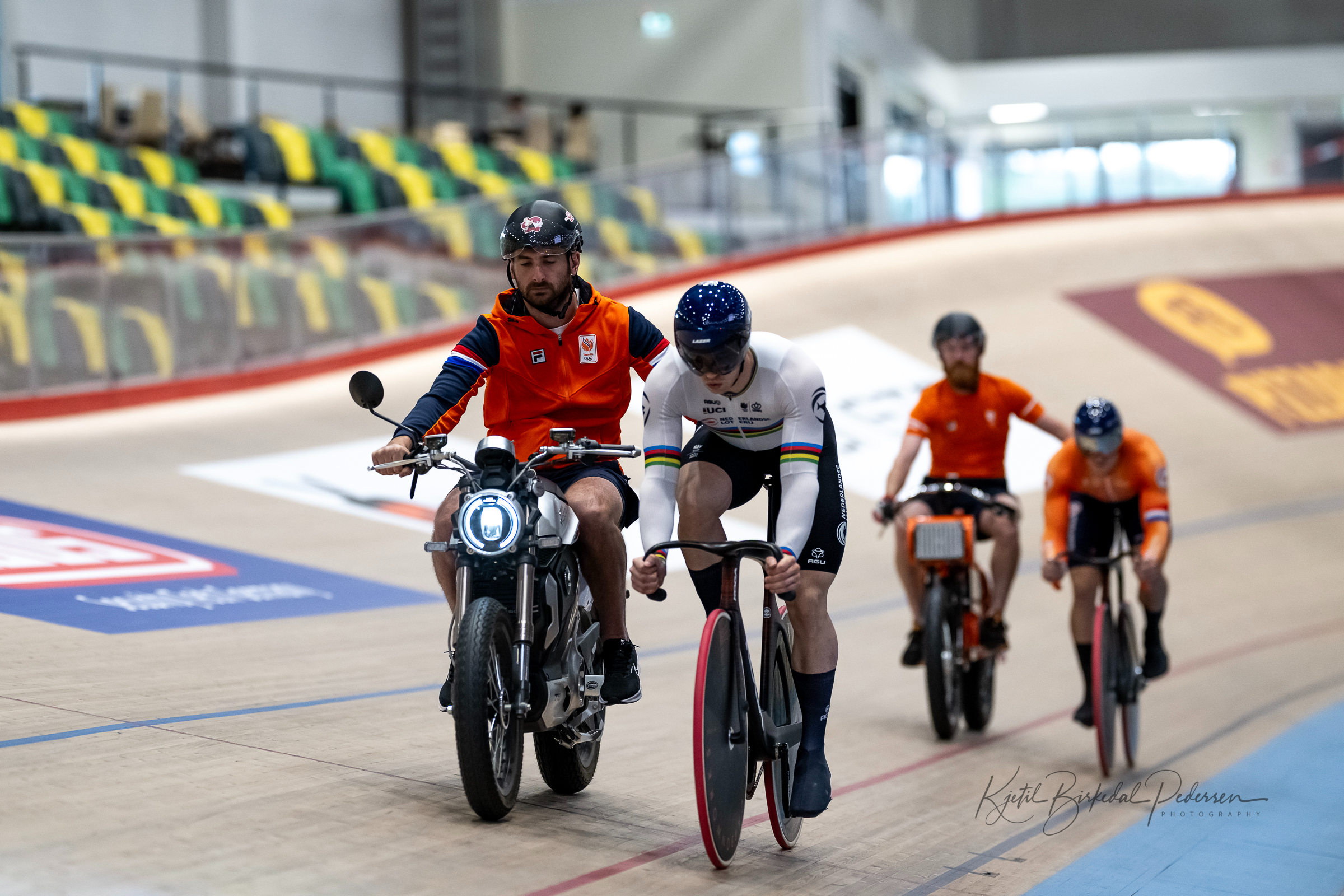
De Boer finds an hour to chat whilst the Dutch athletes are at training, he's at the squad's pre-Olympics training camp at the velodrome near Stavanger, Norway. And it quickly becomes apparent the relatively short Olympic Track racing programme isn't anywhere near the whole story.
Velodromes across Europe are hot property in the run-up to the games as nations battle to secure a booking for their pre-Games holding camps. Sometimes nations may not get the venue they wanted, as De Boer explains.
“Every other nation that's not from Europe, is in Europe at the moment. So all the tracks are booked. We wanted to go to Grenchen [in Switzerland] but that didn’t work out in the end.”
"There are some nations that have a lot more money than we have. So for example, I think what happened with Grenchen is that we wanted to go there, and then the Kiwis wanted to go there. So I think they have a slightly bigger team, and they have more budget, so they probably just outbid.”
The sprint team found some valuable track time at the Vår Energi Arena in Sola, Norway, though and De Boer explained everything worked out in the end.
“The track is very good. The people are very nice. Everything's organised here. We got a bit of the discount, so it works out great.”
Tech trends and sourcing equipment
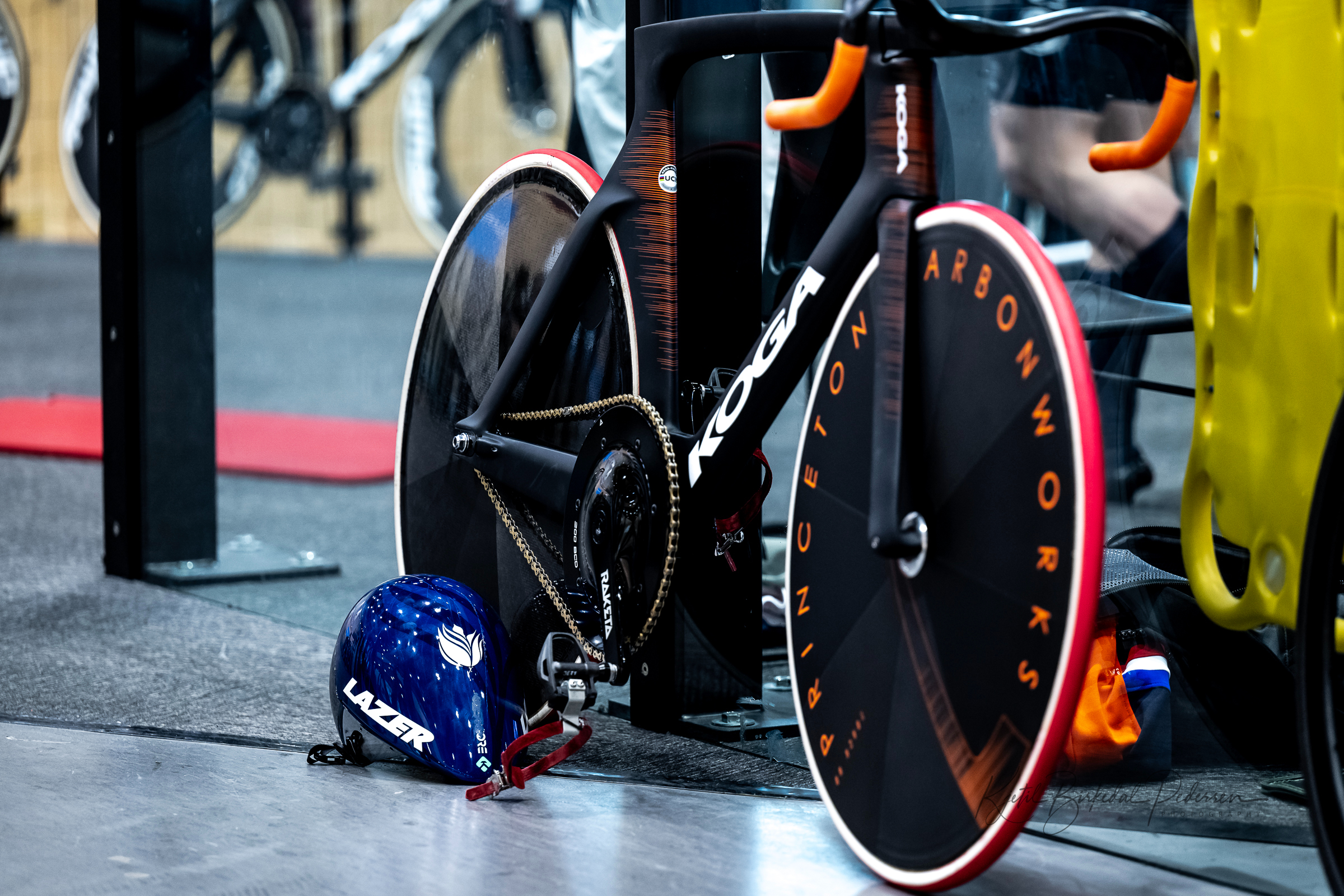
The rise of the extreme-looking track bike has been well documented and reported on over the past several years. The Hope / Lotus bike developed by Great Britain probably kicked off the trend and De Boer cited the wide-framed track bikes as one of the key trends in track tech. Elsewhere, De Boer cited tubeless tyres for the team pursuit events (but with inner tubes) and lots of raised, 'praying mantis' style pursuit positions.
“When the British came out with the extreme wide forks and seat stays that was obviously pretty crazy. And now a lot of countries are copying that. Look has a bike like that. Now, the Japanese built a bike that's pretty similar. The Factor bike has something similar as well."
Dutch track cyclists have ridden Koga bikes for a long time, and don't use the super wide frameset approach. It sounds like the team has chosen to make considered changes and upgrades in specific areas for maximum performance.
"We [the team] and Koga didn’t want to change the frame, we changed the fork a bit, but it's not like we are using the really wide ones, and that's a big trend at the moment."
"All the sprinters will have new handlebars from Koga, we also have a new fork that narrows to interface with a narrow 63/64mm front hub. The lower part of the fork dropout is going in now, so that changed. But to be able to use it we needed new wheels as well [due to the width]. So we partnered up with Princeton, so all our front wheels are going to be Princeton, and that's really good."
De Boer also explained the riders will use new cranksets from Raketa, made in the Czech Republic. No ordinary chainset, they retail at €2,500 and have a monster 200bcd (chainring bolt hole spacing) for the huge front chainrings being used on the track. Another drivetrain gain comes from the chains from D.I.D, who have a background in motorsport.
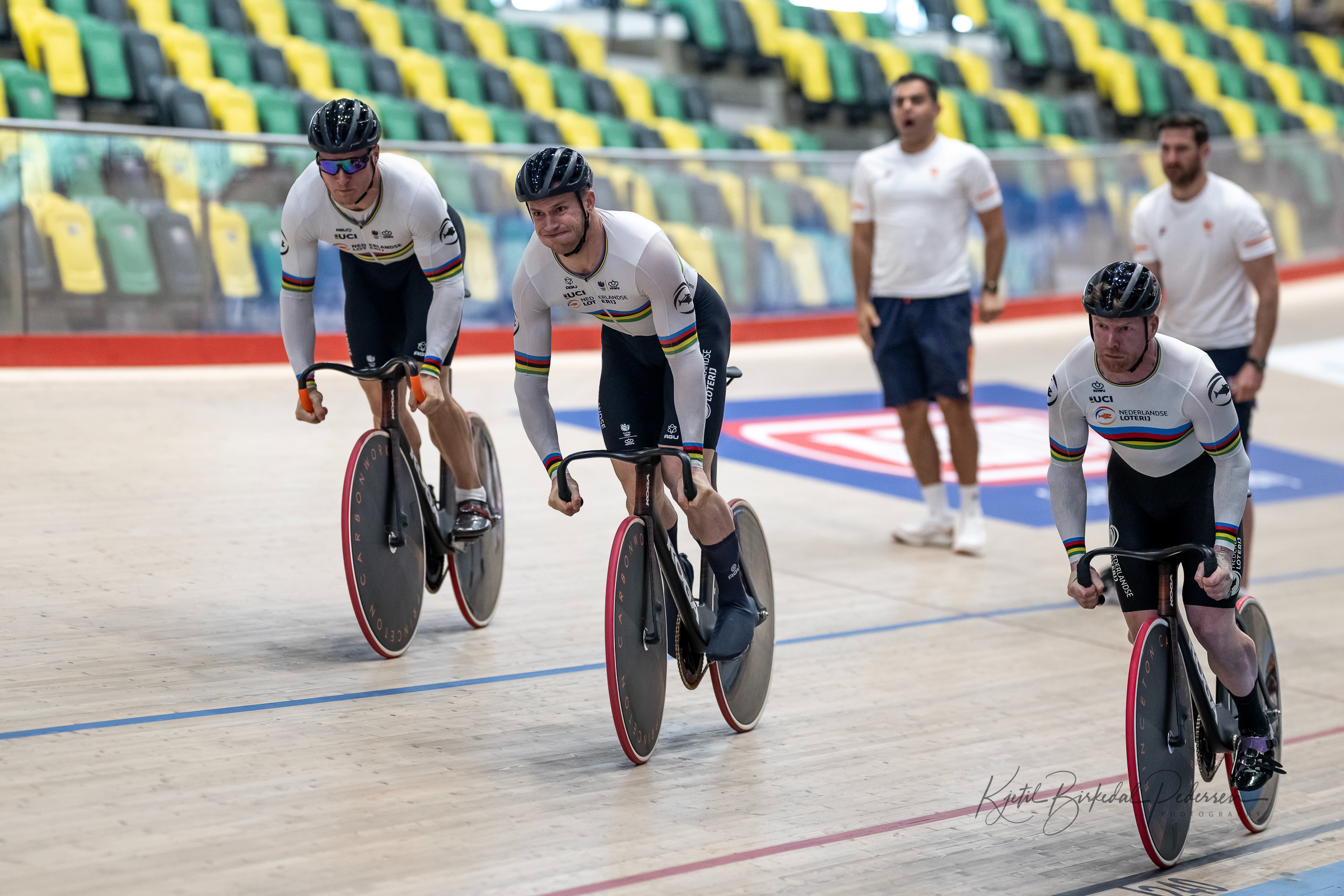
You would think equipment for an Olympic Games would be planned and mapped out months or even years in advance, but De Boer explained that wasn't the case. This Olympic cycle has seen multiple nations scrabbling around for equipment, and it seems getting hold of certain components before the games kick off in Paris has gone down to the wire.
This goes against the widely acknowledged narrative that the post-COVID parts shortages are now a thing of the past. That said, lots of the parts being used aren't your average disc wheelset or rear derailleur and are special orders.
“It's actually pretty funny, because before Tokyo, when the whole bike industry was on its knees more or less. Everybody got all the equipment, and nobody ever had any problems with the equipment. We got everything very early. Everybody on the track that I spoke to had everything, and there was no problem. And now everybody we speak to, they all have problems with the equipment.
"On the 1st of May, we had frames, and that was about the only thing. We didn't have forks, we didn't have handlebars. We had nothing. Still, we're waiting for handlebars. We still need more cranksets."
“So we've got 20 wheels coming in today. That's a week before we leave. So we still have to sand them all down, and glue tyres to them."
"The British also needed a lot of wheels. I heard from the Germans that they're waiting for 10 more wheels; they need five frames. Everybody you speak to, they all have problems with getting the equipment. So, yeah, it's weird that it's such a big difference from Tokyo."
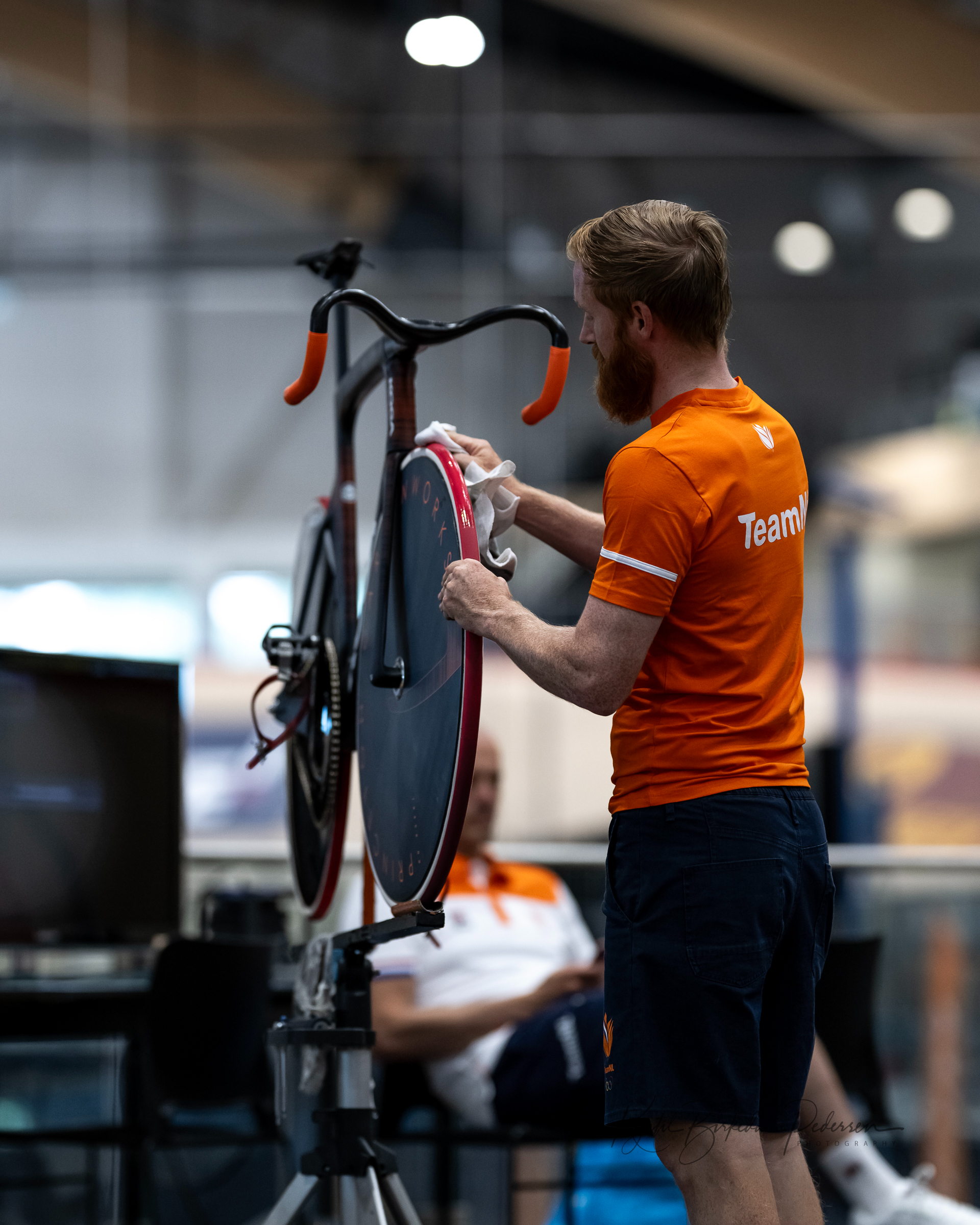
The very last Dugast track tubulars
The Dutch squad use Dugast tubulars, made in Holland for years. The company was acquired by Vittoria fairly recently and the Dugast track tubular may not have much of a future, you won't find them on the Vittoria website now. But they are the weapon of choice for De Boer and the squad and it sounds like the Dutch team's large final order was the very last lot of track tubs to be produced by the brand.
"Dugast is gone, the team were able to order a lot of tyres because they knew things would be changing, and Dugast gave us everything they were able to make. Everything that isn't perfect we use in training. For the Olympics, we put on the good ones."
For context, these are incredibly lightweight and fast tubular tyres which are glued onto a wheel rim by hand, not to be confused with tubeless. The 'not good' ones may have a slightly wonky tread, or due to their delicate, handmade nature, don't run completely perfectly on a wheel. But make no mistake, they are fast.
De Boer believes the extra work involved in working with the tyres is worth it for the performance they provide and is confident they are faster than the Vittoria tubular tyres used by lots of other nations now.
The 25mm tyres use a latex tread and are run at very high pressures. The minimal cotton base tape makes working with them and gluing them more difficult than the average tubular. It seems what they lack in usability they make up for in pure speed.
"We put so much pressure in it, normally we put 14 bars in it, and that's like 200 psi. So they just have to be really hard, from what I've tested, it's like the harder, the better. But we don't want to risk blowing a tyre or something, so we always just stick with 14 bars."
"Normally, sometimes some of the riders want to have the rear tyre a little bit softer for the standing start, you have a little bit more grip. But then if you go fast through the corner, you want them to be hard, you know, if the heavy sprinters, if they go 80k an hour into a corner and the tyre is too soft, they will lose the back wheel. So, yeah, you still need a lot of pressure."
If you're thinking what's all the fuss about, a track rider, especially an Olympic-level sprinter thundering into a wooden 42-degree bank at 80km/h is putting a serious amount of load onto a tyre. The hard, glued-on tyre, stands up far better on the velodrome banking.
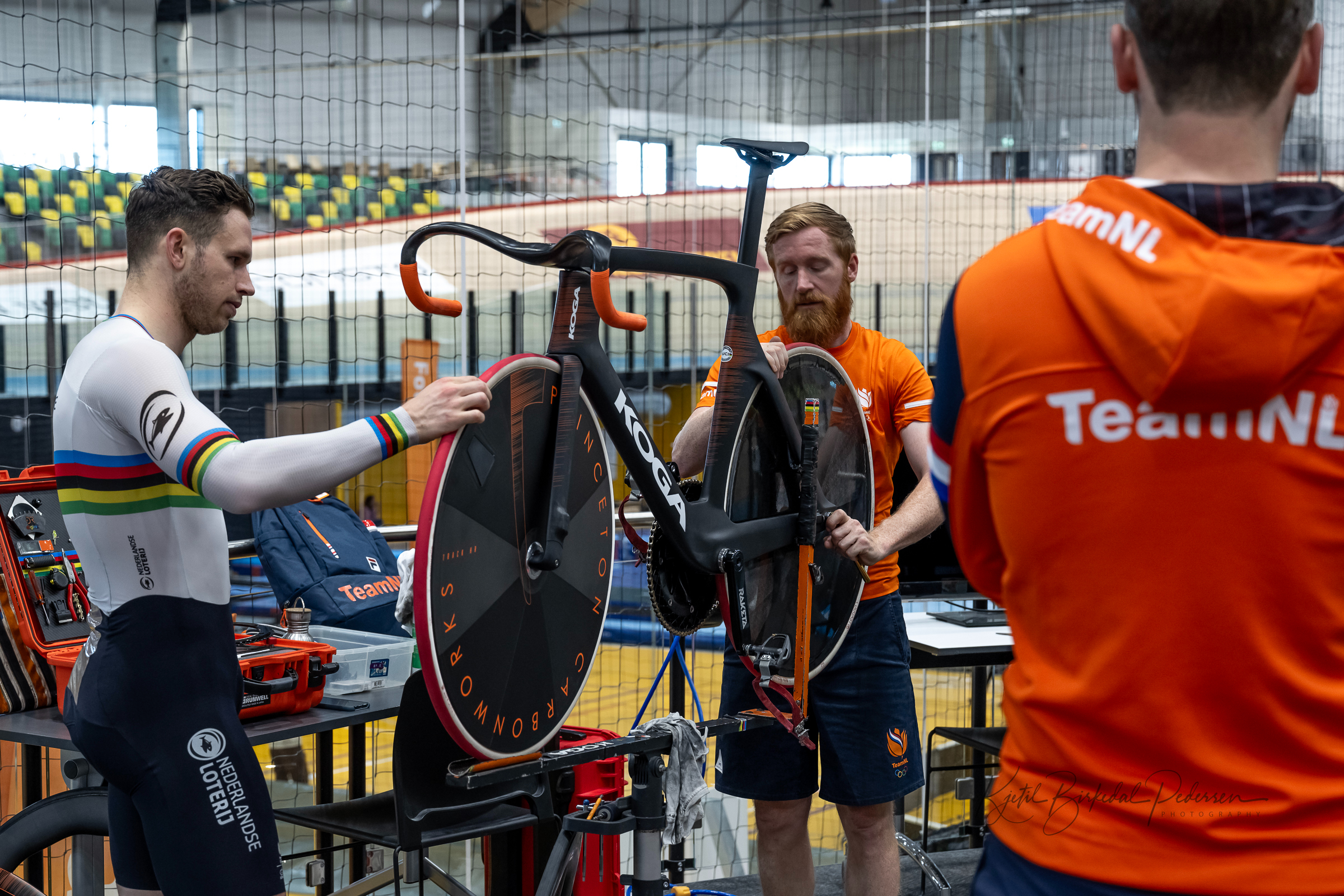
Glueing tubular tyres can be a slightly messy and laborious process, and they must be glued properly to the rim of a tyre, or you run the risk of them coming unstuck in use. Glueing tubs for an Olympic final is a serious business. De Boer's experience shines through here and explains he feels no nerves about the tyres he glues coming unbonded.
"We know with these tyres, they're so fragile and lightweight and they're not perfect, even if you sort them, they're still not perfect. I can still glue a lot of tyres in Paris if necessary, I don't feel nervous about them not being stuck."
"After the standing starts with the sprinters, the tyre can have damage and need changing. But in the Omnium the tyre can last a long time, it depends on the event and the rider. With a smooth rider, the tyre will last a long time, with a rider that's all over the place the tyre won't last long. In the Madison, the tyres wear quickly due to the aggressive riding and line changes."
Three team sprint rounds give a total of nine laps of a 250-metre velodrome, which gives you an insight into the lifespan of these tyres. Albeit with the huge wattage and start loads of the world's best sprinters. De Boer sums up the no-compromise approach for performance though.
"For me, it doesn't matter if I have to change a tyre before the race, if it's quicker, it's quicker. "
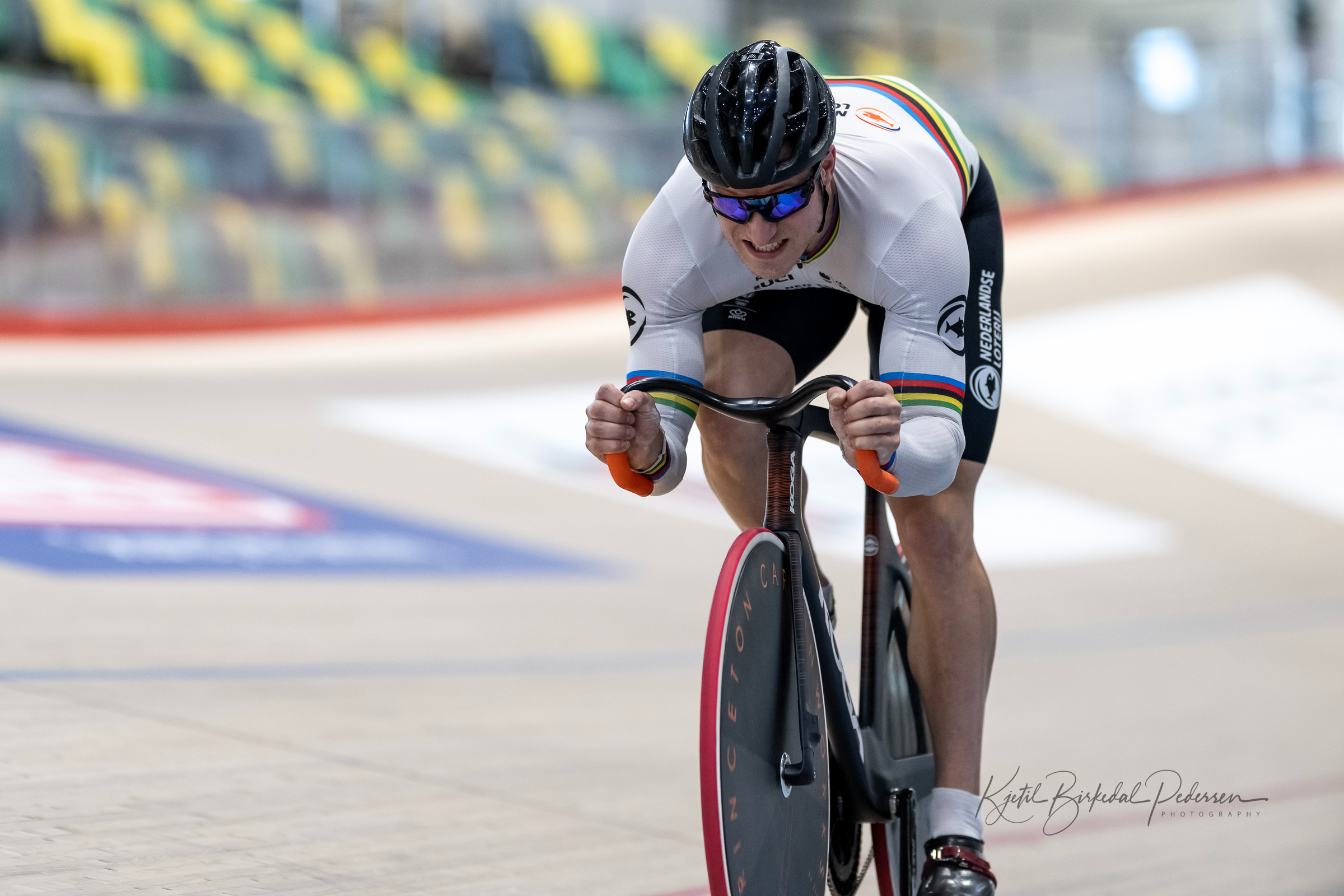
Registering equipment with the UCI
During Team GB's all-conquering period on the track, you would hear how the squad's very fastest equipment wouldn't even be used for World Championships, such was the focus on maximum performance at the Olympics. Post-Games, the best equipment would be hidden away again or even burnt to keep things secret.
Those days of a nation turning up with a shock new piece of kit or equipment are gone though, De Boer explains, thanks to updated rules and the need to pre-register the equipment a nation will use with the UCI ahead of time.
"Since then, a lot of things have changed. So now everything has to be registered before you could just show up with stuff, so that was never tested, then you burn it afterwards, nobody would know what it was."
The UCI final equipment list was published on the 29th of March this year, so nations would know from them what they could expect rivals to be using and plan accordingly. They could then select the equipment they will use from this list for specific events. De Boer explained there was an element of registering a lot of products to keep your options open and mean you have access to the fastest kit and not miss out on any potential advantages.
"I know that we registered 15 or 16 skinsuits. And I know that most nations did this because if you look at the list, the UCI publish the list with all the skinsuits used. There are so many skin suits on it. It is ridiculous."
"Now everything is registered, everything is seen, everything is tested by the UCI. With the skinsuits, for example, they have a machine that measures the amount of air that is going through the fabric. They will measure everything. It's not so secret. So that's a good thing, I think because everything is coming closer together now, instead of a nation just investing $2 million in a skinsuit."
"The UCI is really trying its best to organize stuff like this. You always hear that there is a lot of stuff going wrong with UCI but, in this kind of thing, they're really trying to make the best out of it and make it work with all the nations as well."
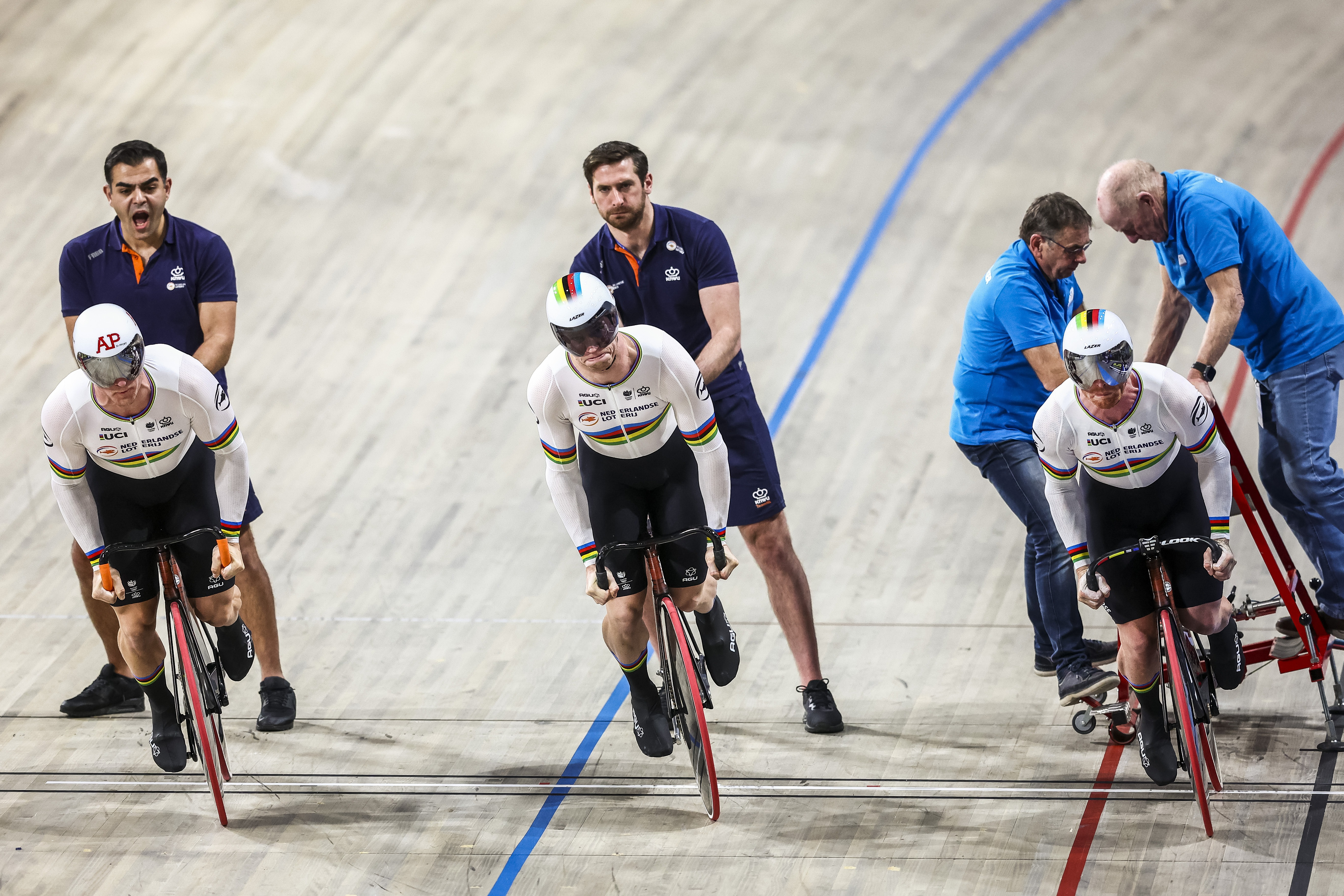
Track conditions in Paris
Different velodromes around the world have different characteristics and ride qualities depending on the length of their straights, bankings, and track widths. De Boer explained the track should suit the sprint events and contribute to some fast times.
"It's a pretty fast track because it's wider, I think it's like seven and a half meters or something, instead of seven. So especially with 200 metres, you have a little bit of extra falling speed [when dropping from the top of the banking]."
"I know that Harrie and Jeffrey as well are really a big fan of the Paris Velodrome, from the first time they were there. So that's good. I expect, especially in the 200 metres, a spectacular time there. I don't think the world record will be broken, but I wouldn't be surprised if it does."
Atmospheric conditions also play a part in velodrome performances, take Bradley Wiggins' infamously slow track conditions when he broke the World Hour Record in London. The pressure inside the track will also influence what gearing the riders use to race on.
"The race gear is something that they decide on the day. It really depends on air pressure and air density, the form of the day, and your opponent. So the gear is always changing."
"We have these tools called Kestrels. They are like little weather stations at the track, you can see the air density and everything. Sometimes you look at the weather forecast and you think it's going to be really good, but it also depends on the temperature inside. The amount of people inside also makes a difference. If you have a full stadium, air density will change."
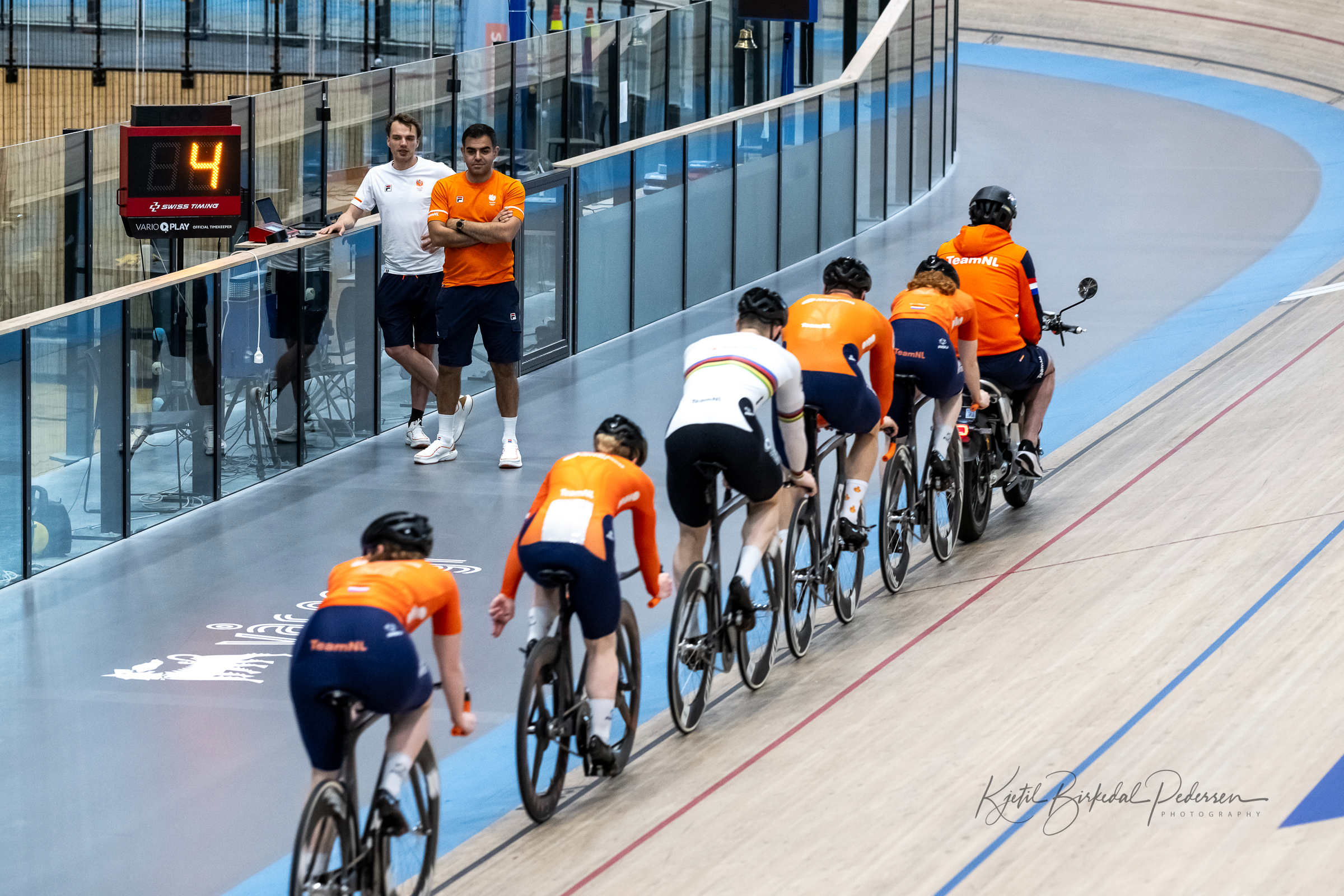
You would perhaps expect the Olympic Games to just be another level across the board. From performances, equipment and logistics. But De Boer explained they are actually the easiest track competition of the lot. There are fewer events and fewer riders.
“The funny thing is that Olympics are actually pretty easy because you have a small team normally. If we go to World Championships or something, we normally bring like 16 people, 18 people, something like that. Now you are limited, so we bring 10 riders and we have two reserve riders, So 10 riders, and then you have six days of competitions.
"You have a limited amount of races as well because, at the World Championships, you have a points race, a kilo [which don't feature at the Olympics]. We only have five events. So because it's all in six days, normally you have a three-hour track morning training session and then racing in the afternoon, that's pretty relaxed."
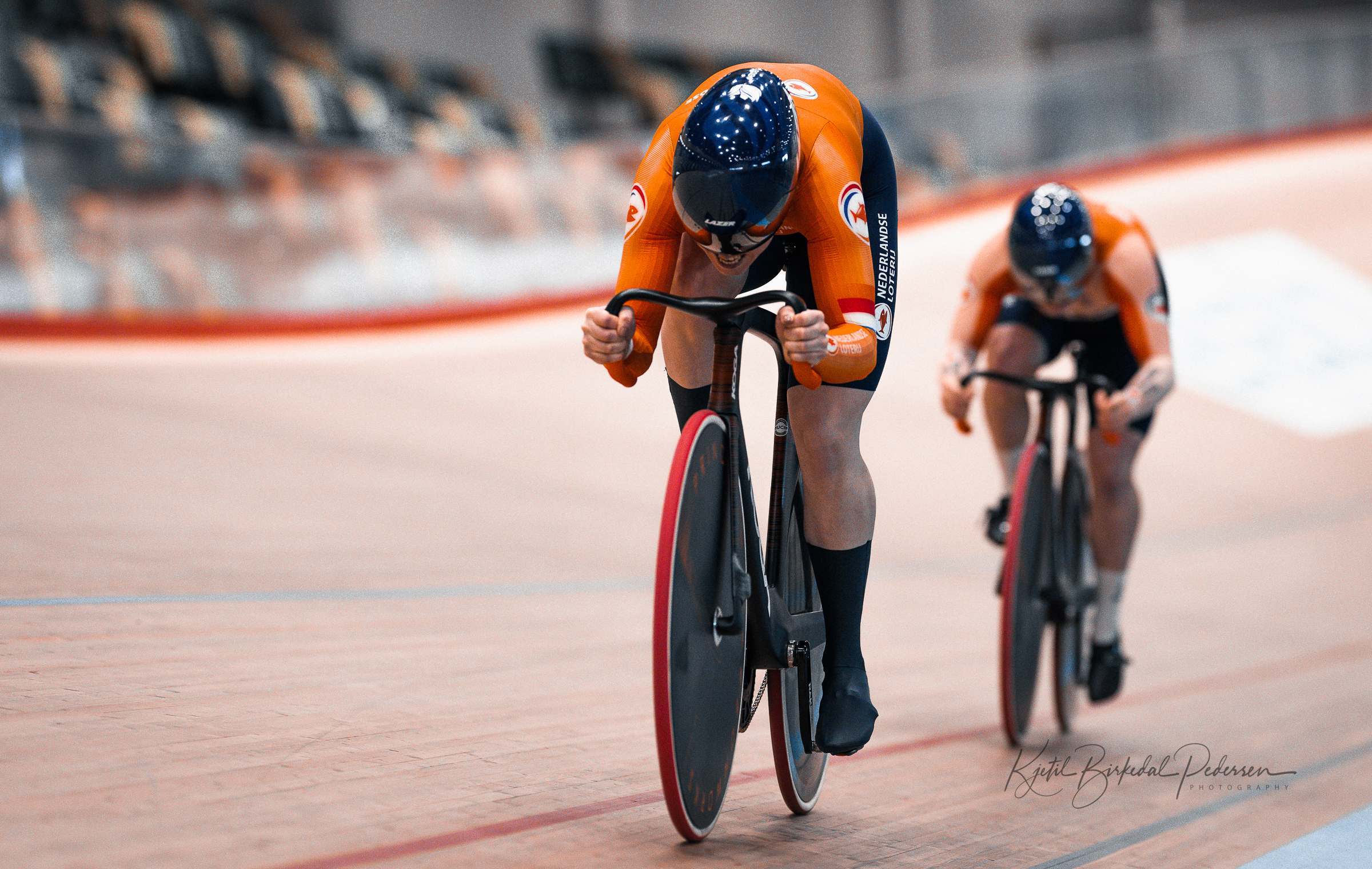
It's fair to assume it's six days of total and complete focus for the two-man mechanics team, given the stakes and pressure. But De Boer stressed the importance of taking time for yourself to switch off and relax to be ready to focus again when it mattered.
"It’s important to find time to do some other stuff for yourself. You know, go for a little ride in the morning. It's also important, I think, to clear the mind. It's still a long time, especially because the whole preparation period is very busy as well. So you really have to take care that when you go there, you're not too tired already."
It's clear the pressure will ramp up when the squad arrives in France, particularly for the men's team sprinters, the defending champions and hot favourites.
"Yeah, there's a lot of extra pressure. Because, especially for us with the team sprint, we have to win it, more or less. There can't be anything going wrong, because we have to win it. Everybody expects us to win, there's a lot of pressure there, so as soon as that is out of the way, then we can start having fun."
The Olympic values extend beyond what happens in individual events and are part of the very fabric of the Olympic games. Whatever the outcome in the velodrome, the riders' performances will surely add another rich and exciting chapter to the history of Olympic track cycling.
Thank you for your Cyclingnews subscription. We use our subscription fees to be able to keep producing all our usual great content as well as more premium pieces like this one. Find out more here.

Tom joined the Cyclingnews team in late 2022 as a tech writer. Despite having a degree in English Literature he has spent his entire working life in the cycling industry in one form or another. He has over 10 years of experience as a qualified mechanic, with the last five years before joining Cyclingnews being spent running an independent workshop. This means he is just as happy tinkering away in the garage as he is out on the road bike, and he isn’t afraid to pull a bike apart or get hands-on with it when testing to really see what it’s made of.
He has ridden and raced bikes from an early age up to a national level on the road and track, and has ridden and competed in most disciplines. He has a keen eye for pro-team tech and enjoys spotting new or interesting components in the wild. During his time at Cyclingnews, Tom has already interviewed some of the sport's biggest names including Mathieu van der Poel, Tadej Pogačar and Alberto Contador. He's also covered various launches from brands such as Pinarello, Ridley, Specialized and more, tackled the Roubaix Challenge sportive aboard his own rim-brake Cannondale SuperSix Evo, tested over 20 aero helmets in the wind tunnel, and has created helpful in-depth buying advice relating to countless categories from torque wrenches to winter clothing.
